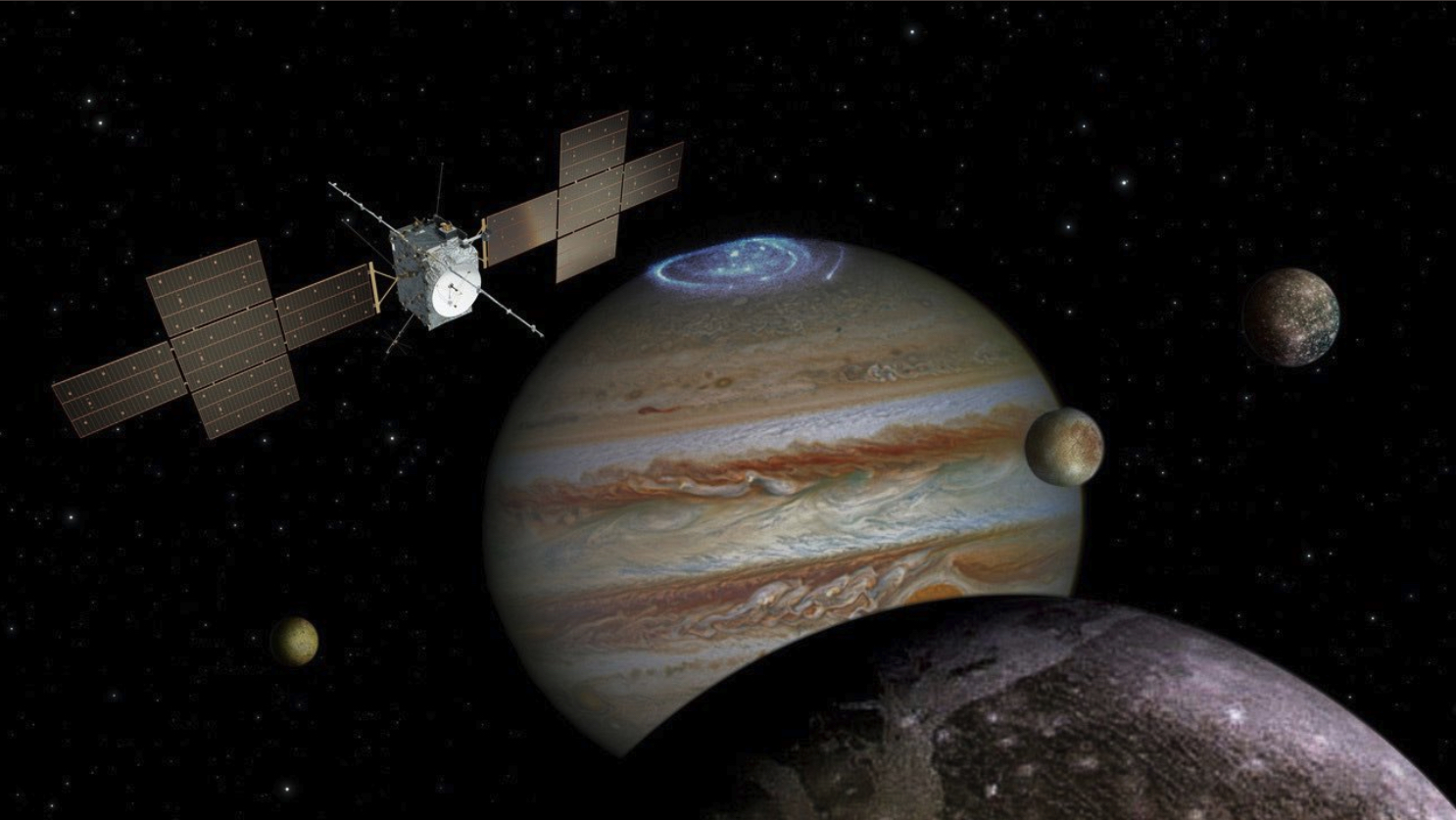
Its launch, scheduled for yesterday, has been rescheduled for today at noon. European research spacecraft Sokwhich will study the mysterious moons of Jupiter.
The European Space Agency’s Sok mission was scheduled to launch yesterday from the Kourou spaceport in South America, but the ground crew was forced to suspend the process due to adverse weather conditions in the region. The mission will be the first to the solar system’s ice giant since NASA’s Juno mission in 2011.
The Airbus-built Juice spacecraft carries ten scientific instruments, including optical and thermal imaging cameras, a spectrograph, radar, pressure gauge and other sensors, which will be protected by a special heat shield. The small spacecraft is surrounded by a series of 85 square meters of solar mirrors, which ensures its energy autonomy in an environment with minimal sunlight. “This is one of the most complex spacecraft ever launched,” says ESA Director General Josef Asbacher.
Juice is expected to arrive in orbit around Jupiter in July 2031. By then, the spacecraft will have to perform complex gravity maneuvers, using the gravitational field of other planets as a catapult. Thus, “Juice” will orbit Venus in 2025 to return close to Earth in 2029 to gain “time” for its final destination, Jupiter’s moons.

Galileo
Jupiter’s moons were first observed by Galileo in the 17th century, naming them Io (hot volcanic moon), Europa, Ganymede, and Callisto (frozen moons). “The Jupiter system resembles the solar system in many ways. His study will allow us to understand the workings of our solar system and the formation of planets, ”explains Carol Mandel, head of the ESA scientific service.
The arrival of a European spacecraft into the orbit of the planet to study its satellites is expected in July 2031.
The main mission of the Juice is not to detect life on the moons of Jupiter, but to detect conditions that will be suitable for the emergence of microbes. Although Jupiter is uninhabitable as a gas giant, its moons, especially Europa and Ganymede, are ideal candidates. Beneath their icy surface, the two moons contain oceans of liquid water, a necessary ingredient for microbial life to emerge.
During its mission, the spacecraft will make 35 orbits around three satellites. In 2034, the Juice will orbit Ganymede, the largest moon in the solar system with a radius of 2634 km – the same size as Mercury. Ganymede is the only satellite that has its own gravitational field, protecting it from dangerous solar radiation, as it happens to the Earth.
Previous scientific missions have confirmed theories that Ganymede has a gigantic ocean between two huge ice sheets. “Its depth in many places exceeds twenty kilometers, which makes it much deeper than the oceans of the Earth,” emphasizes Josef Asbacher.
One of the questions that worries the scientific team is whether water in liquid form in the interior of Jupiter’s moon interacts with the surface, absorbing chemical elements from it. Such a chemical reaction could lead to the appearance of organic nutrients, which is one of the necessary conditions for the development of an ecosystem suitable for life.
The €1.6 billion Juice program is the first European space mission to explore a planet in the outer solar system, i.e. outside Mars and the Cowper asteroid belt. “This is the most important mission of the decade,” Asbacher comments.
NASA, for its part, is preparing the launch of the Europa Clipper probe with a launch horizon of late 2024. NASA spacecraft will target Jupiter’s moon Europa.
Source: Kathimerini
Anna White is a journalist at 247 News Reel, where she writes on world news and current events. She is known for her insightful analysis and compelling storytelling. Anna’s articles have been widely read and shared, earning her a reputation as a talented and respected journalist. She delivers in-depth and accurate understanding of the world’s most pressing issues.